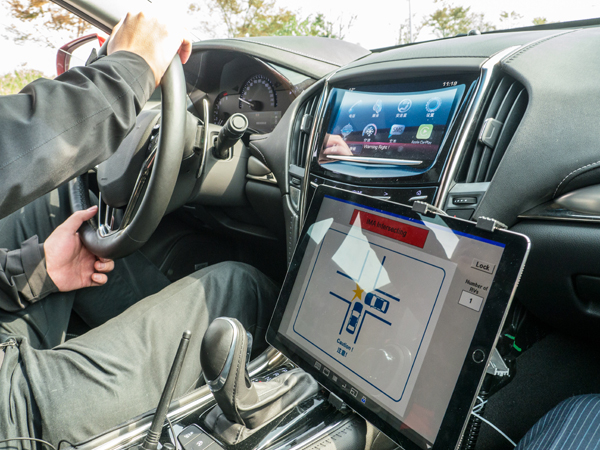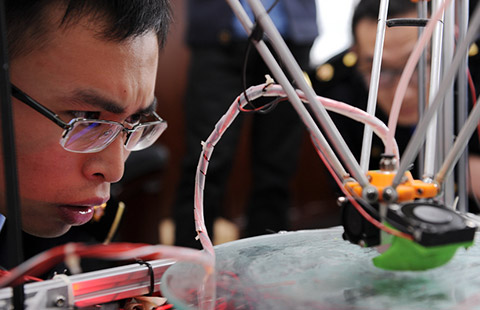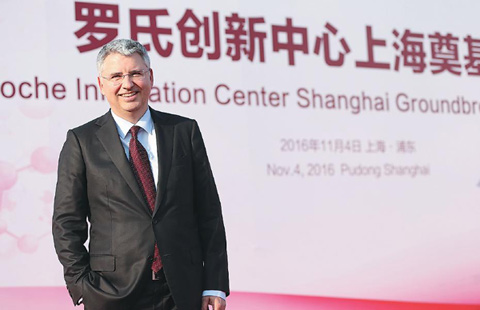Creating safer, smarter vehicles that connect and communicate
 |
|
A collision warning pops up in an add-on display in a Cadillac ATS-L during General Motors China's demonstration of vehicle-to-vehicle communication on Nov 3 in Shanghai. HAO YAN/CHINA DAILY |
Carmakers and a university recently teamed up to define vehicle communication standards, with guidelines set to be published by the end of this year, to help boost transportation safety and the development of intelligent and connected vehicles, or ICVs.
The group was founded at the end of October and is led by General Motors Co, Tsinghua University and Chang'an Automobile Ltd. Supported by the Society of Automotive Engineers of China, the group will exchange standards for vehicle-to-everything communication, or V2X, and complete a definition and demand analysis.
V2X communication is the vehicles' language, so a complete set of communication standards is necessary for underpinning an intelligent transportation system using ICVs. Communication standards are now included as a part of the upcoming China Intelligent and Connected Vehicles Technology Roadmap.
Industrial insiders hope the group's work may help accelerate the application of intelligent transportation systems on a larger scale to prevent transportation accidents.
John Du, director of General Motors China Science Lab, is optimistic about the future of V2X communication development.
"The technology will help avoid accidents and level-up efficiency. We need to finalize the roadmap and put it into commercial use as soon as possible, since the country has the most demand on the market," said Du at a roundtable on Thursday in Shanghai.
V2X communication may elevate the overall efficiency of the nation's transportation by 30 percent, according to SAE-China's prediction. The United States' National Highway Traffic Safety Administration estimated the technology could help avoid 81 percent of traffic light accidents in the country.
Yao Danya, professor of automation at Tsinghua University, said: "The focus of V2X communication is on improving transportation safety and easing traffic congestion."
He suggested that "China may accelerate the deployment of the technology, as long as local governments initiate the necessary infrastructure upgrades at high-incidence spots of traffic accidents."
The country put the first national-level demonstration base for the testing of ICVs, into operation in Shanghai in June and brought the sector into a more practical phase. The National Intelligent Connected Vehicle Testing Demonstration Base supports demonstration and testing of programs such as collision alerts, brake alerts and pedestrian crossing alerts.
Multi-vehicle demonstrations were carried out by General Motors China on Nov 3 in the base in Shanghai. The demonstration expanded to vehicle-to-infrastructure communication in complicated road situations just five months after the debut of vehicle-to-vehicle communication technology.
Matt Tsien, executive vice-president of General Motors and president of General Motors China, envisions rapid development of ICVs, as the government is capable of coordinating among the parties and investing in infrastructure as required to maximize benefits from the technologies.

















